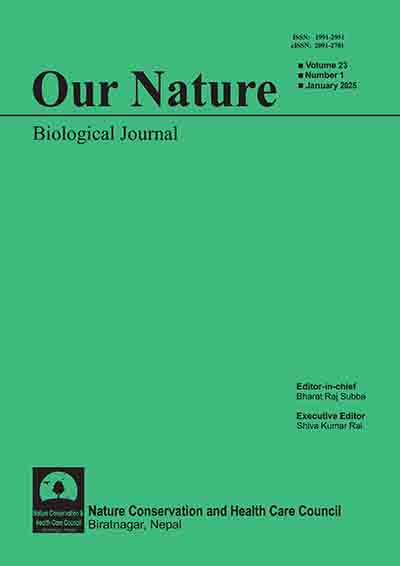Oxygen uptake in relation to body weight in freshwater fish Tilapia Oreochromis niloticus
DOI:
https://doi.org/10.3126/on.v23i1.74967Keywords:
Oxygen consumption, respiration, seasonal temperature, summer and winterAbstract
This study shows the oxygen uptake rates of Tilapia (Oreochromis niloticus), in relation to body weight during two distinct seasonal temperature conditions: winter (20±1°C) and summer (30±1°C). The relationship between oxygen consumption (mlo2/hr) and body weight was analyzed using the equation y=a.Wb, where (a) is the intercept and (b) is the regression coefficient. In winter, the regression coefficient (b) was 0.7038, with a correlation coefficient (r) of 0.9972 (p<0.01), and the antilog of the intercept (a) was 0.375. Oxygen uptake rates varied inversely with weight, with values of 0.2898 (mlO2/g/hr), 0.1981(mlO2/g/hr), 0.1570 (mlO2/g/hr) for 2g, 9g, and 17g, respectively. During summer, the regression coefficient (b) increased to 0.8028, with a correlation coefficient (r) of 0.9937 (p<0.01) and the antilog of the intercept was 0.551. Oxygen uptake rates similarly decreased with weight, ranging from 0.5542 (mlO2/g/hr), 0.3374 (mlO2/g/hr), and 0.3230 (mlO2/g/hr) for 2g, 10g and 19g fish, respectively.
Downloads
Downloads
Published
How to Cite
Issue
Section
License
Copyright (c) 2025 The Author(s)

This work is licensed under a Creative Commons Attribution-NonCommercial 4.0 International License.
This license enables reusers to distribute, remix, adapt, and build upon the material in any medium or format for noncommercial purposes only, and only so long as attribution is given to the creator.




